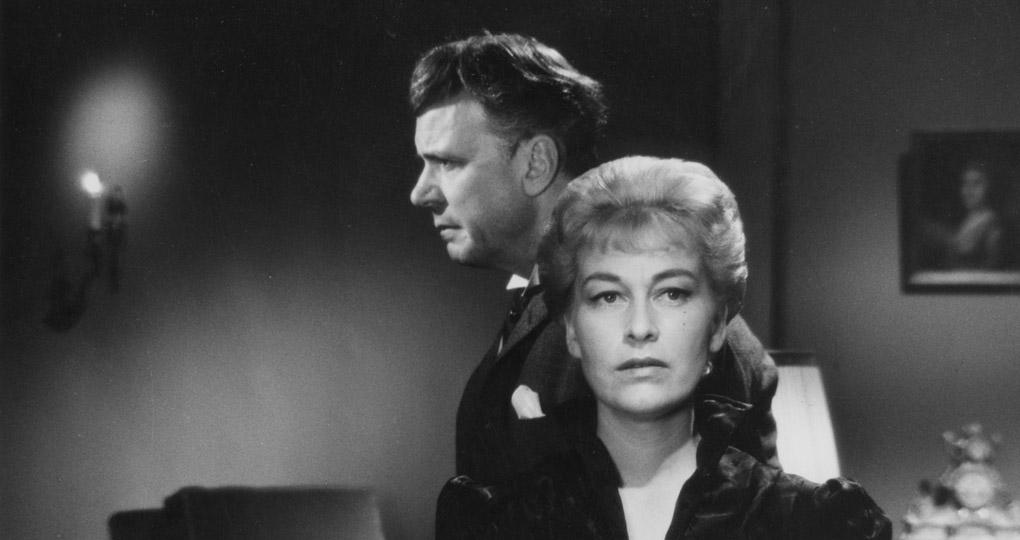Gertrud, Dreyer's final film, was an abject failure. Its premiere at the Salle Médicis in Paris on December 18, 1964 was covered by the Danish press as a national humiliation. Even the Danish ambassador to France posted an account in Kristeligt Dagblad the day after the screening lambasting the film. Hopes for the film had been high: Dreyer's previous film was the masterpiece The Word (Palladium, 1955), which had won the Golden Lion for best film at the Venice Film Festival when it premiered there in 1955, and Dreyer's return to Paris for the Gertrud premiere marked an auspicious return to the scene of another of his masterpieces, The Passion of Joan of Arc (Société générale des films, 1928).
Although the film recovered somewhat from its initial critical drubbing (young critics like Jean-Luc Godard and André Téchiné soon rallied behind it, and Gertrud even ended up winning the Bodil award the next year for Best Danish film), it was a commercial failure, treated by the public as a stilted, dated, lugubriously-paced swan song from an old man - Dreyer turned 75 during the making of the film, and would die four years later - based on a respected and periodically-revived but not-overly-admired turn-of-the-century stage play by the Swedish writer Hjalmar Söderberg. And indeed, the film is stilted, it is slow moving; its pleasures, to those few who have yielded to them, are not only hard-earned but perversely painful.
The salutary power of that pain has inspired much of the criticism of Gertrud to date; indeed, Gertrud is a perfect case study for turning artistic "failure" into - or, rather, for accepting a kind of artistic failure as - the precondition for another kind of aesthetic achievement. For its "failure," its "minor" status, is very much entwined with Dreyer's - and his heroine's - uncompromising quest to move beyond the confines of simple aesthetic pleasure to something more frightening and true than mere "art." Which is not to say that Gertrud isn't a work deeply preoccupied with art. As critics of Gertrud have repeatedly noted, the dominant presence of aesthetic objects in the film, and the contemplation of them by the film's characters - along with, of course, the hyper-aestheticised feel of the entirety of the film's framing and staging - makes the film peculiarly "beautiful." It is as if Dreyer's fixation with art and artworks in Gertrud, and his characters' tragically unceasing failure to connect with their beauty (or, even more tantalizingly, their heroic rejection of beauty), created the conditions for Dreyer's beautifully tragic aesthetic.
The film is also intimately linked to Dreyer's search for his own origins, in the way his obsessive research in preparing the film circled back uncannily to his own biography, which, as the great Martin Drouzy has shown, was haunted by the search for the mother he never knew, a poor Swedish woman he could only imagine through his readings of the paper trail left by her short, tragic life - a life interrupted by Dreyer's illegitimate birth and subsequent adoption by a Danish family, and ended three years after she gave him up, when she poisoned herself in a futile attempt to abort another child. That she died a few short miles from the home of the real woman on whom the character of Gertrud is based - a home Dreyer visited while preparing the film and which he insisted be meticulously recreated for the last scene of the film, a scene not found in Soderberg's play - should not surprise us.
Gertrud can thus be seen as Dreyer's final journey "home" - as he pursued his usual intensive research into the "real" characters who underwrote his fictional ones he discovered them to inhabit his own birthplace (and he himself, as "Carl Theodor Dreyer," son of a Danish printer, was in so many ways a fiction). At the end of the film, Gertrud disappears behind the closing door of that home, as Dreyer, in the final image of his final film, closed the door on his own, endless journey.
By James Schamus | 23. May 2010
